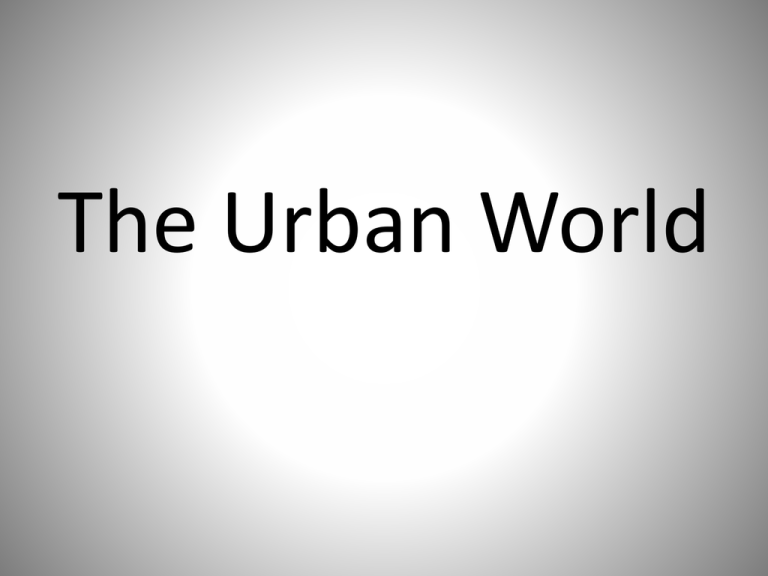The Urban World NOTES
advertisement

The Urban World The Changing City • By the late 1800’s, advances in technology and an influx of immigrants began to transform urban centers. • Cities could only grow “out” so much so as a result cities needed to grow “up”. Skyscrapers • Skyscrapers became a reality because of 2 key technological advances: – Bessemer process – The mechanized elevator, invented by Elisha Otis Cities Expand Further • The development of mass transit made it possible for cities to expand further outward. – Frank J. Sprague developed one of the first mass transit systems The Birth of Suburbs • By 1895, the nation boasted over 10,000 miles of electric railways. • The implementation of the electric car allowed for the expansion beyond the city limits, which became known as the suburbs Different Classes Emerge Do you think it is necessary to have a class system in America? Why or why not? The Upper Class • The new class of wealthy city-dwellers, like Rockefeller and Carnegie, which emerged in the late 1800’s were known as the nouveau riche, which meant the “newly rich”. The Upper Class • This class of people looked to display their wealth to the rest of society by spending their wealth. • This behavior was known as conspicuous consumption. The Upper Class • To answer this criticism, many of the nouveau riche donated a portion of their immense wealth to art galleries, libraries, museums, universities, etc. • this donating of riches is known as philanthropy The Upper Class • The upper class was also concerned with displaying proper social behavior, known as Victorian culture. The Middle Class • A new middle class emerged in American cities which consisted of accountants, clerks, engineers, managers, and salespeople. • this new middle class was a result of the new industries and corporations that began during the late 1800’s. The Middle Class • Although corporations created positions for women, like salesclerks and secretaries, most middle class women worked in the home. The Poor and the Push to Reform • The poor were mostly immigrants who had little money and were forced to live in tenements. The Poor and the Push to Reform • Since the government was not stepping in to help the poor, some reformers established settlement houses, which were community service centers located in poor neighborhoods. The Poor and the Push to Reform • Settlement houses offered many advantages to the lower class: – educational opportunities – skills training – cultural events The Poor and the Push to Reform • Jane Addams was one of the major leaders of the settlement house movement. • Addams started Hull House in Chicago to help supply immigrants an opportunity to advance in society. The Poor and the Push to Reform • In the late 1800’s, Protestant ministers attempted to address the conditions of the poor by developing the idea of the Social Gospel. • The Social Gospel called for people to apply Christian principles to address social problems.



